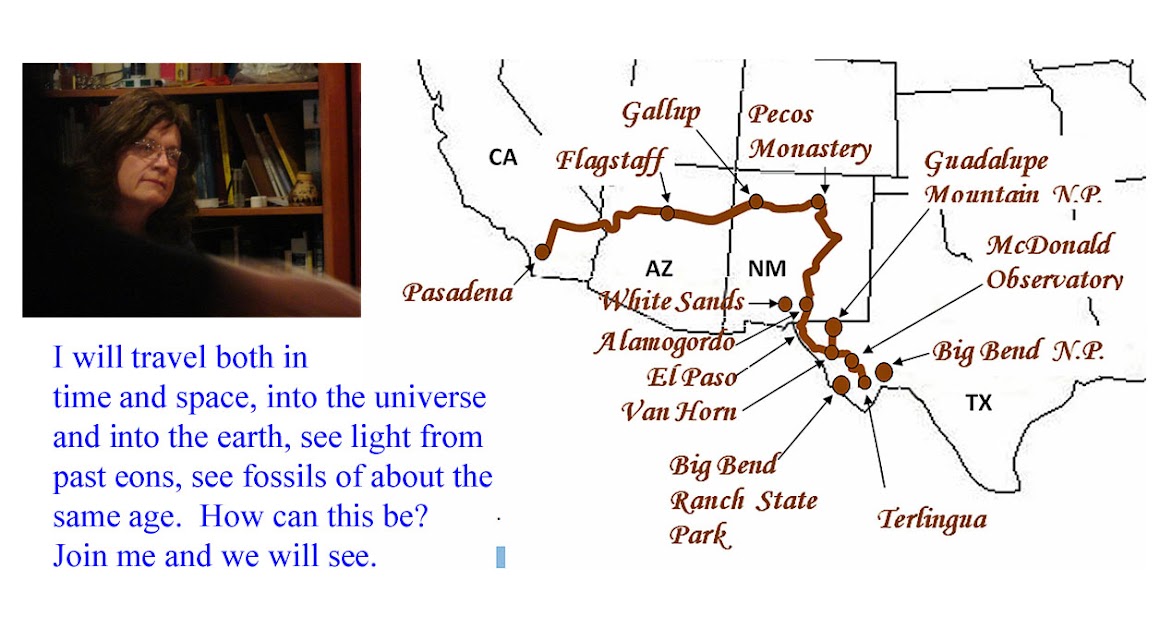 |
| Wild Boar, Texas Style—too big, |
I’ve seen their diggings in the rocky desert mountains. Texans hunt them, and last night I tasted their meat -- gamy, tough, meat of a wild digger.
I have traveled into the past, listening To Rocks, and soon it will be time to go home. Sunday evening, April 8, should find me in my own bed.
“Exploring Pangaea.”
“Why?”
“Because I can.”
“Their lifetimes have passed.”
“No, they have move into a world they do not recognize.”
I began writing “A New Theory of Time,” and posted it at https://sharonintexas.blogspot.com/2018/03/blog-post.html
writing as an observer of another self, something I’ll continue here.
She believes that creatures of the Permian Reef changed the world in which they lived. Their densely populated cities run 400 miles around the shore of an ancient sea. Their sprawl was so populous that they knew only crowds. They piled themselves on top of each other, each performing a task to keep the structure of their city intact.
They did not keep clocks in their houses. Instead they listened to their hearts, rhythms of their moods and desires. But were they only bodies, subject to the laws of electricity and mechanics as electrons or clocks, expressed in the language of physics? Can they be understood like deductions of Euclidian geometry?
Without a future to consider, time terminated for them in the present. Time was discontinuous, and seems continuous only to us from a distance. Locality of time, of isolation, in a crowded city. How could they know a rich variety of life just beyond a mountain of years in which she sees them.
The texture of time is sticky. Towns become stuck in some moment of history. People become stuck in some moment of their lives and do not get free. Each one who gets stuck in time gets stuck alone.
Today, they wander into her life, and she thinks of them as bees. Just as each bee is an unthinking automaton, while the colony of bees performs high thinking, so this colony of brachiopods is given houses made by sponges, glued together with lime-secreting algae. They provide for the common good, though each one understands little of how it all fits together.
After their extinction 250 million years ago, there came the age of dinosaurs, and trees that died 216 million years ago. She sees them as quartz replicas in Petrified Forest, and marvels at how precisely the simple forces of nature has brought them to her attention. Or are those forces so simple?
All this happened while tectonic plates were moving land masses about the planet, raising what was under the sea, high into the sky.
 |
| Dikes of recent magma intrusion, 17 million years ago, following paths of least resistance. |
 |
| Pompei ,Human Fossil 79AD |
Then magma punched its way up to the surface, in volcanoes, dikes, sills, and pyroclastic flows. So abrupt was one flow that people were fossilized in its blast at Pompei in 79AD.
A fossil is like a footprint in winter snow, a creature frozen in rock, a butterfly mounted in a case, a page in a book, ready to be read.
I suppose that’s enough for now. I have much more to share and even more to consider sharing.
Love to you all, and thanks for following,
Sharon
Please see a map of the places where I have slept, as updated
each day by Michael Angerman: Sharon in West Texas



















































